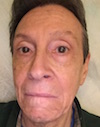 [As some of my readers know, in addition to my professional work as a critic, historian, and theorist of photography I’m an avocational, on-again-off-again writer of poetry, short fiction, and creative nonfiction. You’ll find information about that elsewhere at The Nearby Café.
[As some of my readers know, in addition to my professional work as a critic, historian, and theorist of photography I’m an avocational, on-again-off-again writer of poetry, short fiction, and creative nonfiction. You’ll find information about that elsewhere at The Nearby Café.
In 2005 I began preparing for publication a book titled Like Father Like Son, combining my own poetry with that of my father, Earl M. Coleman. In its published form, our book has two front sides and no back side, so as to give equal weight to both my father’s work and my own. (For a selection of my father’s work online at The Nearby Café, click here.)
Earl decided to include in his half of the book an interview with him that the editor of a “little” poetry magazine had conducted and published. I decided to mirror that in my half of the book; but, having no apropos existing interview to use, and no available interrogator to conduct one, I decided to do it myself, asking myself a set of questions comparable to those my father had answered. This is the result, drafted between August 2005 and June 2006.
Periodically, here at this blog and elsewhere, I have discussed my practice as a critic. But I haven’t published much about my writing as such. This is the most extensive consideration of my craft that I’ve ever drafted. Since some readers have asked about my background, it seems fitting to post it during this 50th-anniversary year.
In this meditation I make occasional reference to poems from the book not included in this self-interview. You can download a pdf file of my half of the book here. Part 2 appears below; click here for Part 1. The next part will appear shortly. — A.D.C.]
•
Allan Douglass Coleman: A Self-Interview (cont’d)
… Q: When did you start writing?
A: Thanks to my father, I can date this fairly accurately. We were living in the south of France in 1951, a town called Golfe-Juan on the Côte d’Azur; I was eight years old, and I came in one day from school and recited the following to him from memory:
First Poem (age 8)
A dog will bark
when it is dark.
He will not bark
when it is sunny.
When it’s sunny
he’ll call you honey.
But when it’s dark,
he’ll bark.
He immediately wrote that down, and also preserved a segment of a slightly later poem of mine:
Fragment, 1951 (age 8)
Flowers, flowers,
in the towers —
oh how beautiful are they
in the midst
of all the day.
Humble beginnings, but there you have it.
I should add that, having no alternative, my parents put me into a local grade school, so I learned French by the total-immersion system, becoming not just Francophone but truly bilingual. Once we returned to the States I didn’t make much use of it for the next 30 years. But I returned to France for the first time in 1980 and immediately felt at home in a Francophone environment.
I’ve spent a lot of time since then in Francophone cultures; I speak French fluently once again, and read it easily. In the past decade I’ve begun to develop some awareness of the extent to which that bilinguality shaped my worldview and my unconscious. Nothing I could name, exactly, but I know this profoundly affected my relationship to both written and spoken language. [For an account of my return to Golfe-Juan in summer 2000, click here. — A.D.C.]
So I learned to read in French as well as in English during that period. When we left France we moved to London, the Stretham Hill district, for about six months. There I got exposed to British English, spoken and written. Not exactly bilinguality, but further tacit evidence that language emerged from culture, unfixed, slippery, mutable. It took years to get the British u out of my spelling of words like favor.
I also have vivid memories of going numerous times with my parents to see the D’Oyly Carte Opera Company performing Gilbert and Sullivan in repertory in London. I loved the spectacle, the music, but mostly the librettos. At that age I didn’t catch their social and political and cultural references. However, the fluidity of the verse, its intricate meter, internal rhymes, assonance, alliteration, seeped into me as a source of pure pleasure.
Q: What were you reading then?
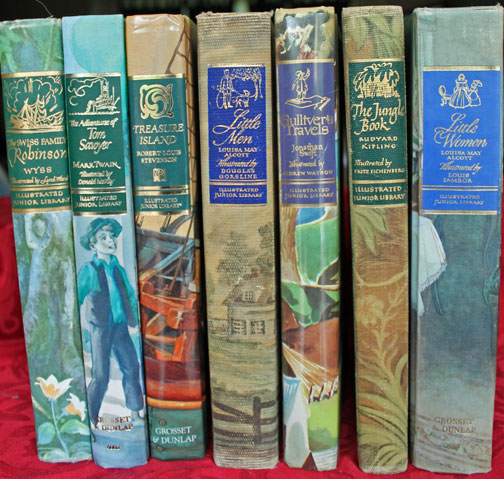 A: Mostly what I was given, what people thought of as classic children’s literature: Hans Brinker, Heidi, Robin Hood, Swiss Family Robinson, Huckleberry Finn. Plus other stuff, including comics. Like my father and mother, and in part thanks to them, I became an avid early reader, and a bookish child. Writing as a practice came later. Beyond those two short pieces in France, I don’t remember feeling the impulse to write till high school. (I was precocious, so my high-school years — a nightmare — happened between the ages of 13 and 16.)
A: Mostly what I was given, what people thought of as classic children’s literature: Hans Brinker, Heidi, Robin Hood, Swiss Family Robinson, Huckleberry Finn. Plus other stuff, including comics. Like my father and mother, and in part thanks to them, I became an avid early reader, and a bookish child. Writing as a practice came later. Beyond those two short pieces in France, I don’t remember feeling the impulse to write till high school. (I was precocious, so my high-school years — a nightmare — happened between the ages of 13 and 16.)
I found adolescence an almost unmitigated misery; writing began to serve as a refuge and outlet. During those years I produced some lyric poems, one or two short stories, a few speeches I wrote for political-activist purposes, and a manifesto for a short-lived satirical street-theater collective that the FBI closed down.
![]() I entered college early, a few months before my seventeenth birthday. By then I knew that writing would form an important part of my life, though I wasn’t sure how. This was Hunter College in New York, Bronx campus, 1960-64. I worked on the campus newspaper, which I ended up editing in my senior year. I also worked on the school literary magazine, which in 1963 published “Midnight Mass,” a one-act play of mine about the death of God that almost got censorship imposed on the entire City University of New York system.
I entered college early, a few months before my seventeenth birthday. By then I knew that writing would form an important part of my life, though I wasn’t sure how. This was Hunter College in New York, Bronx campus, 1960-64. I worked on the campus newspaper, which I ended up editing in my senior year. I also worked on the school literary magazine, which in 1963 published “Midnight Mass,” a one-act play of mine about the death of God that almost got censorship imposed on the entire City University of New York system.
There wasn’t much available at Hunter in terms of creative-writing courses, but my classmates included David Zane Mairowitz, John Allman, Ken Wolman, Barry Jay Kaplan, John Chioles, Harvey Perr, Carole Getzoff, and Richard Goldstein, who variously went on to publish poetry, fiction, nonfiction, stage plays, radio plays, translations, criticism, and cultural journalism. So we had a contingent of people there already extremely serious about their craft as writers.
Mairowitz graduated a year ahead of me, went to Berkeley to do his graduate work, and urged me to come out to the Bay Area. I applied to the creative-writing M.A. program at San Francisco State — one of comparatively few in the country in 1964 — and got in. A great stroke of fortune, in some ways. I could just study English and American literature, take writing courses, and write.
My cohort there included the playwright Ed Bullins; novelist Thomas Sanchez; the poets Philip Dow, Bill Siverly, and the late Stan Rice; and Stan’s wife Anne, now by far the best known of us all. Good people with whom to spend time. I also got to stay out of the military, try my hand at playing rock & roll in a band, and do the other things that mid-’60s San Francisco made possible.
Q: Was that your first experience in a writers’-workshop context?
A: Yes, it was — aside from a class or two at Hunter. I’d observed the workshops my father ran, but I wasn’t writing seriously during that period of his writing life. And in those days, even in New York City, we had none of the writing programs for teenagers that would emerge at the end of the Sixties.
 I’d read some early poems of mine at a few of the downtown coffeehouses, including Les Deux Mégots in the East Village. I knew some of the Tenth Street Poets; John Harriman was a close friend. But I both looked and, more importantly, felt way too young and insecure to seek out and hang with Ed Sanders and Taylor Mead and the other looming and emerging luminaries of that scene. So, aside from my parents and my writer chums from Hunter, I didn’t have any circle of writers with whom to exchange ideas and work.
I’d read some early poems of mine at a few of the downtown coffeehouses, including Les Deux Mégots in the East Village. I knew some of the Tenth Street Poets; John Harriman was a close friend. But I both looked and, more importantly, felt way too young and insecure to seek out and hang with Ed Sanders and Taylor Mead and the other looming and emerging luminaries of that scene. So, aside from my parents and my writer chums from Hunter, I didn’t have any circle of writers with whom to exchange ideas and work.
And though I keenly appreciated the honor of finding myself among the select few admitted to the SF State program, I didn’t really enjoy the experience, or thrive in that hothouse environment. I hated feeling those other people’s fingerprints all over my work in progress. Maybe if I’d had a stockpile of finished work with which I’d already come to terms on my own, I could have accepted bringing that resolved output in for critiques. However, I’ve never produced voluminously in those forms. In any case, even today I rarely show work in progress, in any form, to anyone — not even my editors. That’s another place where Earl and I differ.
In the Bay Area I took part in an informal Friday-night poetry discussion group run by Robert Stock. I wrote a few poems while there, two of which — both sonnets, “Original Sin” and “Polaroid” — I’ve included in this collection. But I concentrated on fiction. My master’s thesis was a set of short stories. No sooner did I turn it in, have it accepted, and put a copy on the shelves in the college library than I stopped writing poetry and fiction, for about 21 years.
Q: Why?
A: Not by plan. It just happened. A number of reasons. One was that I didn’t much care for the work I produced at that point. It felt painfully young to me, strained, trying too hard, uncentered, hollow at the core. Another was that it had the stink of school all over it. Between the two, I couldn’t hear a voice that felt genuinely my own, and wasn’t convinced I had anything of substance to say in those forms at that juncture.
A: I came back to New York and became a freelance prose essayist specializing in the arts, culture, and politics. A mix of “new journalism,” op-ed writing, cultural commentary, and criticism. But that’s a whole other story, most of which isn’t germane to the subject at hand.
Q: Did you miss writing poetry and fiction?
A: Not in the least. Nor did I view myself as either a frustrated or a failed writer of poetry, fiction, plays, nor as a victim of “writer’s block,” which I consider a luxury of the rich. I was curious about where that impulse had gone, that’s all; I used to say that the muse had stepped out for a very long beer.
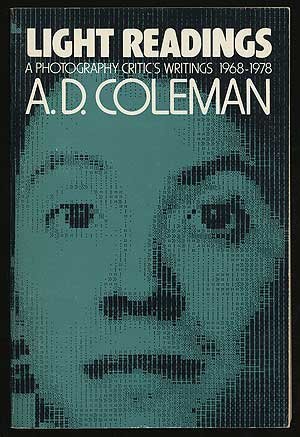 But all of that experience writing in those forms unquestionably fed my work as an essayist in many ways. I’ve had an enormously satisfying life as a working writer of ratiocinative prose. And, until I began writing poetry and fiction again in mid-1988, I got to say pretty much whatever I wanted to say about anything and everything, in print, in the writing I did professionally.
But all of that experience writing in those forms unquestionably fed my work as an essayist in many ways. I’ve had an enormously satisfying life as a working writer of ratiocinative prose. And, until I began writing poetry and fiction again in mid-1988, I got to say pretty much whatever I wanted to say about anything and everything, in print, in the writing I did professionally.
Between ’67, when I finished my thesis, and ’88, I wrote and published well over a thousand essays. (By now that number has roughly doubled.) During that same period I produced perhaps ten poems, drafted one short story, jotted down ideas and scraps for a few others that never went further. Several of those poems appear here: “Turning Thirty,” “Downtown Local,” “For Malcolm,” “Points of View,” and “Family Album.”
Q: What brought you back to working regularly in those forms?
A: In the summer of ’88 I embarked on a love affair. The morning after the very first “night before” I wrote a poem about that experience, and the energy for that mode of writing started flowing again. It seemed as strange and unexpected to me as it probably sounds to you. Here’s one of the best of those:
Lovely when I take her in her sleep
Lovely when I take her in her sleep
sighs like a child, whimpers
deep in her throat; blindly gropes
for my shoulders, pulls me down
upon her; clutches my hair as she whines
in my ear. Nails raking my back,
she groans in her flowing, then covers
my face with a little girl’s kisses,
curls up against me, returns to her dream.
•
Q: What did you do with that new poetry?
A: Nothing at first. Just wrote when that urge struck. Let whatever came out sit and jell, looked at it after a few months to see what held up. Shared it with that lover. Some of it didn’t work, but some did. The romantic relationship didn’t endure for much more than a year, but the poetry kept coming, its range of subject matter steadily expanding.
Just as my early creative writing had nourished my work with the prose essay, so all that prose writing — and the teaching and lecturing that came with the territory — fed the poetry and short fiction. I’d learned how to hear authenticity and inauthenticity, or just unclarities and wrong notes, in my writing in any form, so I could tell exactly when I began to speak in my poetry in a voice with which I felt comfortable. The breakthrough poem, in that sense, was this one:
•
All Mine
“All yours,” murmurs a stranger,
stepping through the small toilet’s
door, and I step past him into the smell
of his shit, take it into
my nose, my chest, my lungs. Nothing
is all mine, everything’s shared,
everything: ghosts of lovers, parents,
friends, my son, aborted offspring
occupy me, a walking hotel, their home
away from home. Just as I
am in others forever: my lust,
my love, my cowardice, my grief,
the stink of my bowels, my words,
these words, in you now, all yours.
•
For better or worse, that was me, unmistakably me, on the page. Once I wrote that, I knew I could do this seriously. By that I don’t mean full-time creative writing, like my father. I’m still a working professional essayist who produces some poetry and fiction; he’s a working poet and fictioneer who produces a few essays. Like him, I write every day, probably about six or seven hours a day, but I emphasize a different kind of wordsmithing. However, that poem showed me I could write poetry in a voice I knew as mine with a degree of gravitas I could respect. Also, on a certain level, it’s a position paper. …
•
 Special offer: If you want me to either continue pursuing a particular subject or give you a break and (for one post) write on a topic — my choice — other than the current main story, make a donation of $50 via the PayPal widget below, indicating your preference in a note accompanying your donation. I’ll credit you as that new post’s sponsor, and link to a website of your choosing. Include a note with your snail-mail address (or email it to me separately) for a free signed copy of my 1995 book Critical Focus!
Special offer: If you want me to either continue pursuing a particular subject or give you a break and (for one post) write on a topic — my choice — other than the current main story, make a donation of $50 via the PayPal widget below, indicating your preference in a note accompanying your donation. I’ll credit you as that new post’s sponsor, and link to a website of your choosing. Include a note with your snail-mail address (or email it to me separately) for a free signed copy of my 1995 book Critical Focus!
 But wait! There’s more! Donate now and I’ll include a copy of The Silent Strength of Liu Xia, the catalog of the 2012-13 touring exhibition of photos by the dissident Chinese photographer, artist, and poet, currently in her sixth year of extralegal house arrest in Beijing. The only publication of her photographic work, it includes all 26 images in the exhibition, plus another 14 from the same series, along with essays by Guy Sorman, Andrew Nathan, and Cui Weiping, professor at the Beijing Film Academy.
But wait! There’s more! Donate now and I’ll include a copy of The Silent Strength of Liu Xia, the catalog of the 2012-13 touring exhibition of photos by the dissident Chinese photographer, artist, and poet, currently in her sixth year of extralegal house arrest in Beijing. The only publication of her photographic work, it includes all 26 images in the exhibition, plus another 14 from the same series, along with essays by Guy Sorman, Andrew Nathan, and Cui Weiping, professor at the Beijing Film Academy.


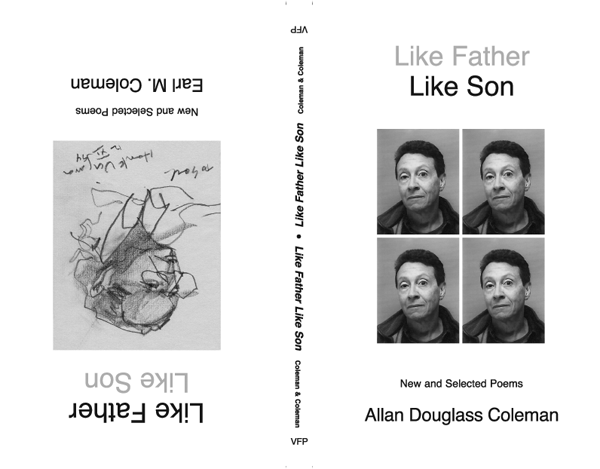
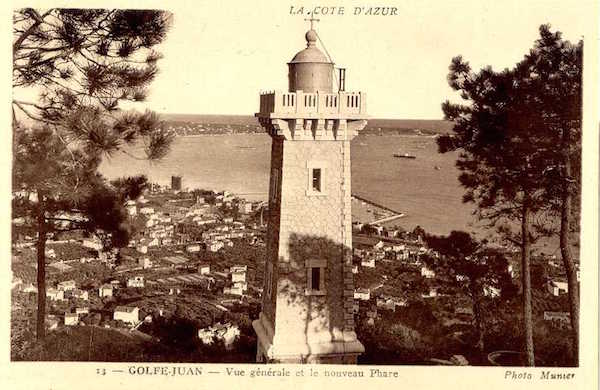
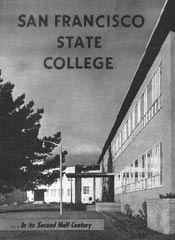
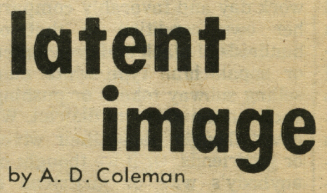




Leave a Comment